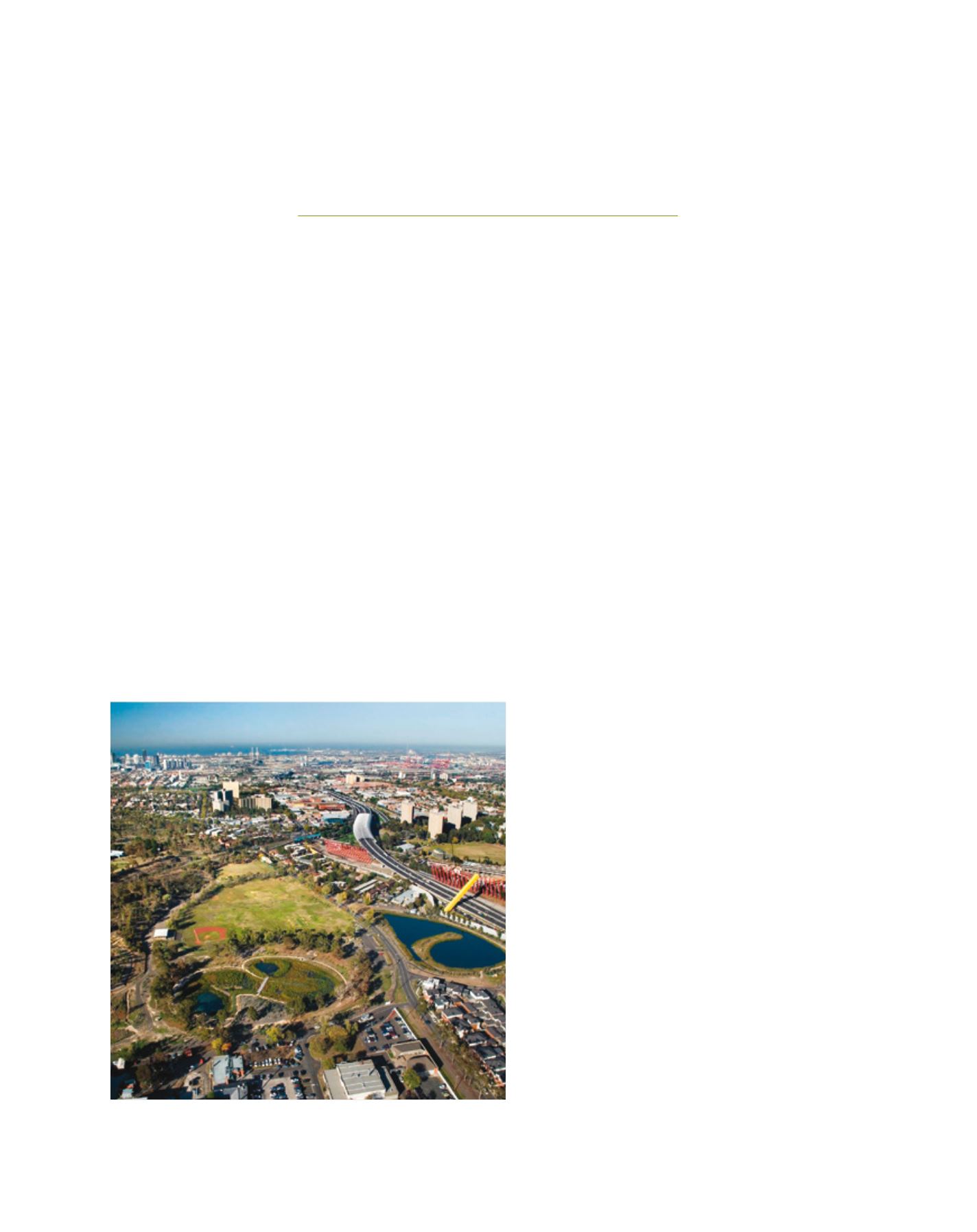

[
] 275
Towards water sensitive cities:
a three-pillar approach
Tony H. F. Wong, Cooperative Research Centre for Water Sensitive Cities
W
hat is a water sensitive city? It is a city that interacts
with the hydrological cycle to provide the water secu-
rity essential for sustained economic prosperity – by
efficient and well-researched use of resources, including some
that have been overlooked by earlier generations of experts. It
is a city that enhances and protects the health of watercourses
and wetlands. It factors into all of its planning the risk of
looming drought and rising sea levels – and equally, the risk
of sudden and unforeseeable floods. Such a city creates public
spaces that harvest, clean and recycle water. Its management of
water contributes to biodiversity, carbon sequestration and the
reduction of urban ‘heat islands’. A water sensitive city is one
where water’s journey through the urban landscape is managed
with regard for its origins and its destinations – and where its
spiritual and cultural significance is celebrated. That city meets
challenges to the supply of life-giving water with integrity (not
evasion), breadth of vision (not the expedient perspectives of
sectional interests), and evidence-based practice (not slogans
from the past, nor borrowings from some imagined future).
What policies will yield these results? Three pillars
emerge to support such development – as affirmed by
research at the Cooperative Research Centre for Water
Sensitive Cities, an Australian Government initiative to
forge partnerships between research institutions and
industry, to find solutions to global challenges. These
three pillars are overarching principles for meeting the
challenge of developing sustainable and resilient urban
water systems:
• cities as water-supply catchments
• cities that provide ecosystem services
• cities with the social and institutional capital for
sustainability, resilience and liveability.
Far from being abstractions or mere theoretical under-
pinnings, these pillars respond to a real need for real
change. They are eminently practical. We accept as a
given the energy and the bursting vitality of modern
cities. That is not simply a part of the problem; it is also
a significant part of the solution – so long as the three
pillars are firmly established. And crucially, there are
implications for less developed cities.
The first of our three pillars, cities as water-supply
catchments, stands in direct opposition to the tradi-
tional model in which a city’s needs are passively served
by catchments external to it. Cities typically depend
exclusively on the capture of rainfall run-off from rural
or forested catchments and/or on depleting groundwater
resources; but the evidence is that such a one-way trans-
action is far from optimal. It is certainly not sustainable
as a universal solution. Communities become hostage
to increasing temperatures and drying soils – prob-
lems that are all the more pressing because of ‘normal’
climate variability, progressively worsened by the
reality of long-term climate change. Reflex reliance on
the conventional approach (“just build another dam”)
is no longer sufficient. The effects of climate change
are uncertain, and rainfall is not invariably reduced.
But overall, it is established that global temperatures
continue to trend higher. Drier catchments are no
longer a feature of one projected future among many;
they are an inevitability. And drier catchments mean
decreased run-off. Our precarious dependency on soil
moisture in external catchment areas has to be broken.
This situation calls for a radically new model. Cities
themselves have enormous potential as catchments,
E
conomic
D
evelopment
and
W
ater
Our cities are water supply catchments – as illustrated by the Royal Park Wetland in
Melbourne, used for harvesting and treating urban stormwater
Image: Tony H. F. Wong


















